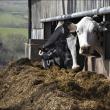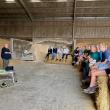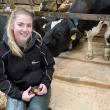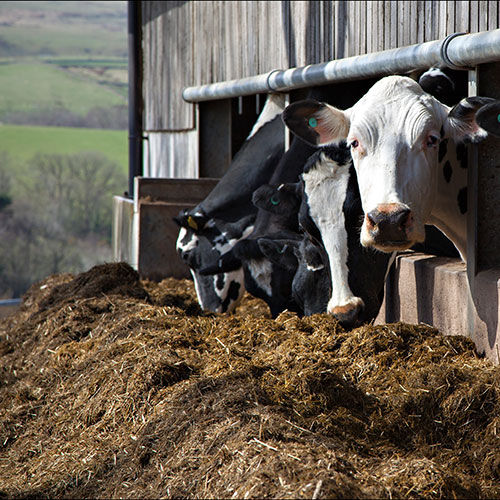We’ve been happy to have Advanced Robot join our team, we are really starting to see the benefits of their experience. We’ve achieved the target of 2.8 visit average whilst grazing with the ABC system.
Maximising Robot Returns
We talk to the Petherick family who improved cow health on their farm to increase output from by 22% in just six months.
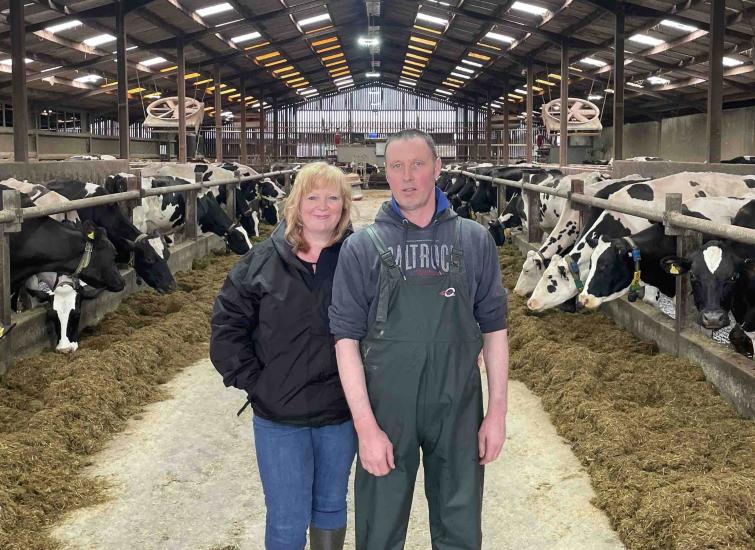
Richard and Rachael Petherick, along with their family milk 170 Holsteins at Aldercombe Barton Farm. On a cheese contract to Saputo, they milk through 3 Lely Robots. The herd is fed a grass-based silage and calve all year round.
Richard is passionate about optimising the genetics of his herd. About a year ago, he noticed his cows weren’t performing to their full milking potential.
“We’d invested so much time, money and effort into the robots, and we were determined to maximise our return on investment. After an initial milk increase when we transitioned onto the robots, things began to plateau,” explains Richard.
With several health challenges affecting the herd, Richard sought expert advice to enhance animal health and performance. He enlisted the help of the Advanced Ruminant Nutrition team, to assess the cows and hopefully provide some answers.
The team approached the cows' health with a comprehensive perspective, addressing every aspect of the operation, including nutrition, robot settings, and cow environment. Central to the company’s strategy is a whole-farm approach, where the team analyses robot data in tandem with observing cow behaviour and health. This allows them to identify and address the key bottlenecks affecting herd health. By prioritising and resolving these critical issues, the team ensures continuous improvement in both animal health and productivity.
“Thankfully, we are now back on track – the team came in and looked at the robot settings and really interrogated the data to pinpoint what we needed to do to bring the milk back up, all whilst improving animal health,” says Richard.
Scott Carter, Technical Manager at ARN explains, “It was important for us to look at the farm KPIs alongside the data extracted from the robots. Richard needed to not only increase milk yield but focus on milk protein levels too, whilst improving animal health to maximise margin and ultimately the profitability of the herd.”
“We adjusted the robot settings and the diet initially to increase visits to the robot, which then increased the yields and the solids. When we first started working with the herd, we knew they had the potential to reach 40Kg, they are now successfully achieving this.”
“The cows have just taken off since Advanced Ruminant Nutrition have been feeding them,” says Richard.
A focus on the dry cows, as a key area, saw the introduction of DC X-Zel into the diet. And, while they weren’t having many issues post-calving, it’s a much more reliable system. The mineral binder is scientifically proven to ensure adequate calcium is available to the cows at the point of calving. Richard notes, “It’s a simple, safe system and the cows seem to cleanse much better.”
As well as looking at the robot settings, the team looked at management protocols and the cow environment. For example, the family have recently installed new lighting in the robot shed with red and white light options.

Richard explains that it’s the whole farm, whole team approach which has positively impacted the cows.
“It’s great to have the full team on board, I can see from the robot software that Scott is monitoring the cows every day and knows how to get the best out of the robot data. The team are on farm most weeks assessing the cows and advising on the cow environment, including the new lighting in the robot shed. Liz is regularly on farm to manage the youngstock rearing too,” comments Richard.
Heifer rearing manager Liz Newman comments, “The team on the farm have been great at implementing the suggestions we’ve given them for youngstock management. This has included introducing a calf milk replacer (CMR) program to best suit their KPI’s for dairy heifers, alongside a tailored plan for beef calves, which has helped them achieve top market prices. We monitored passive transfer in calves, identifying those calves with lower passive transfer had reduced weight gains, even if they showed no clinical signs of disease. We have therefore put more focus onto colostrum management, including enriching cows’ colostrum. Feeding and weaning plans were revised to ensure calves were not seeing a check in performance after weaning. and we adjusted concentrate and forage feeding to promote health and growth, ensuring continued health and growth. Additionally, we introduced cost-effective TMR diets for heifers over six months old, driving better growth rates.”
As with everything else, the approach to youngstock considers the whole farm business and by monitoring youngstock closely and analysing the data, the team have been able to deliver tangible results. This is a continual process, and the team aim to ensure they are serving animals at the right time and have the right numbers coming through to support the needs of the milking herd.
“The whole team approach has been key at Aldercombe Barton Farm to significantly improve overall cow health and enhance milk production by 22%. Richard and his team have really taken on board all the advice given to them to make it work for their farm. They are dedicated to working with us to continually monitor the cows, so they can adapt well to any changes and make improvements for the future,” concludes Scott.
〈 BACK

